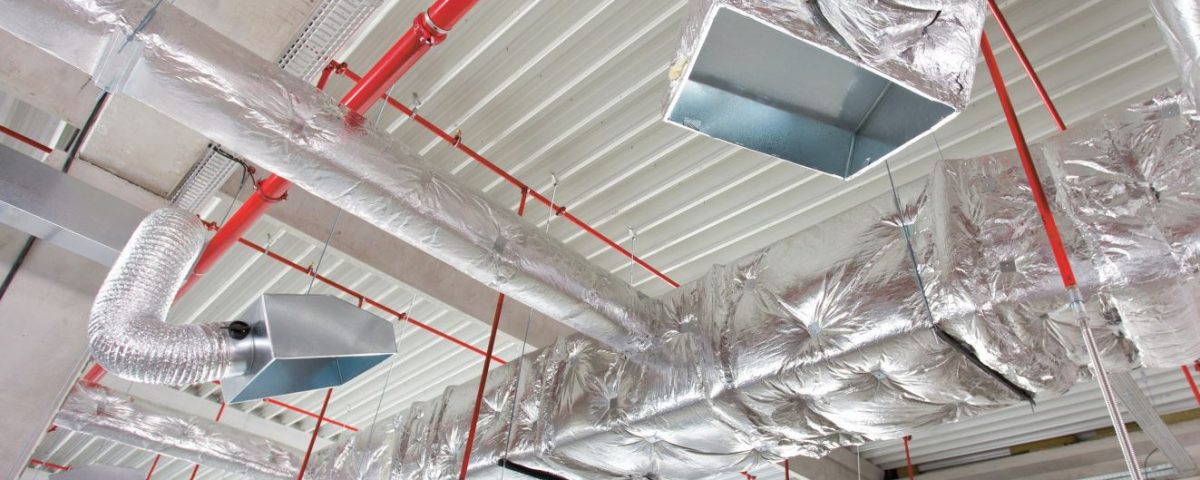
Commissioning Of Fire Protection Systems
8 December 2019Snag List
14 December 2019What is HVAC Commissioning ?
What is HVAC Commissioning
Today’s HVAC systems must be energy efficient, satisfy stringent indoor air
quality and comfort expectations, and still be designed and constructed
within tight budgets. System designs meeting these demands typically have many
components, sub-systems, and controls. Additionally, building construction
involves many specialized trades that often work independently of one another.
Ineffective communication and coordination between designers and contractors, and
among contractors, can produce HVAC systems with installation deficiencies that do
not perform properly. Without verification of the correct interaction and operation
of all systems and components, system performance as specifi ed and intended is
unlikely to occur.
Commissioning is a systematic process that addresses these issues. It facilitates and
ensures the required communication, coordination, testing, and verification, and
results in the delivery of a building whose HVAC systems perform as intended.
Effective HVAC commissioning is an intentional, visible, cooperative and
proactive process. It includes design review, installation verifi cation, proper system
start-ups, functional performance tests, operations and maintenance (O&M) training,
and complete documentation of the HVAC systems. It assists in the coordination of
construction schedules and sequences to facilitate an effi cient construction
process and challenges systems to perform as designed under all specified modes of
operation. O&M staff training provides a basis for continued optimum HVAC
systems performance throughout a facility’s existence. In summary, commissioning
serves the owner’s best interests by delivering a facility with systems that perform as
specified, intended, and paid for.
For the best possible results, commissioning should be included in all phases of
the design and construction process:
- pre-design
- design
- construction
- acceptance
- post-acceptance
Commissioning requirements are then considered and incorporated from
project inception.
In many cases, however, commissioning is not considered until a project
reaches the construction phase. While still valuable, implementing commissioning
after construction begins will be less effective than comprehensive commissioning,
which starts at the pre-design phase, because there is less opportunity to
organize and plan ahead. Because construction commissioning is widely used,
Regardless of the commissioning process used, there are many benefits from
commissioning. Some of these benefits are:
■ Reduction of change orders and additional claims
■ Fewer project delays
■ Managed start-up requirements
■ Shorter building turn-over transition period
■ Less post-occupancy corrective work
■ Minimized effects from design changes
■ Improved indoor air quality and occupant productivity
■ Better operation, maintenance and reliability
■ Lower energy and operations costs
■ Value-added quality construction
■ Complete and useful O&M documentation
■ Owner advocacy for design and construction decisions
■ Documentation of the entire construction process
HVAC Commissioning Service Providers
HVAC commissioning requires a team approach. The leader of the
commissioning team is the commissioning authority.
The HVAC commissioning authority works directly for the owner and
is independent of designers, contractors, vendors and suppliers on the
project. Such independence is essential for the authority to be seen as
totally objective in leading the commissioning process. The HVAC
commissioning authority must maintain an unbiased approach to
problem solving and conflict resolution.
Important qualifi cations and skills of HVAC Commissioning Agencies include:
■ Knowledge of HVAC systems, covering design, common control strategies,
installation, operations and maintenance
■ Experience in controls for HVAC systems, including familiarity with current
technology, both conventional and direct digital control
■ Practical field construction background
■ Demonstrated ability to organize many specific activities into a coherent
commissioning plan
■ Communications skills, both written and verbal
■ Proficiency in documentation
■ Experience working with multi-disciplinary teams
■ Familiarity with testing and balancing
Comissioning Company Scope
■ Provides detailed methodology for both comprehensive and construction
HVAC commissioning
■ Covers commissioning in both new construction and existing buildings
■ Covers HVAC systems typically found in commercial and institutional
buildings
■ Provides standards for proper documentation and reporting, with sample
forms
■ Defines the roles and responsibilities of all commissioning team members
HVAC Commissioning Benefits
HVAC commissioning promotes a quality assurance approach resulting in
signifi cant value to the owner. The specific benefi ts of the HVAC commissioning
process include:
■ Reduction of change orders and additional claims—In Comprehensive
HVAC Commissioning, the commissioning authority carries out reviews
of the design and of contractor submittals as part of planning for commissioning.
These reviews often identify potential problems that can be considered by
the designer
and result in revisions that avoid future change orders
and claims.
■ Fewer deficiencies at substantial completion—During construction,
commissioning identifies incorrect or incomplete work early, allowing
corrections to be done, documented, followed-up, and re-tested. Thus most
problems are corrected before substantial completion so the building will
be fully operational at that time.
When defi ciencies do remain at substantial completion, commissioning
ensures they are well documented and that responsibility for correction has
been established.
■ Fewer project delays—The detailed schedule and coordination information
provided by the commissioning process allows contractors to schedule and
sequence the required work effi ciently. Problems are therefore identifi ed and
resolved with minimal delay, and the project stays on schedule.
■ Managed start-up procedures—Preparations for equipment and system
start-up involve many interrelated contractor tasks. Commissioning’s
focus on planning and coordination facilitates implementing those tasks more
efficiently.
■ Shorter building turnover transition period—When a building’s HVAC
systems operate as intended, and its O&M staff is properly trained, the
building moves quickly to a fully operational status. The O&M staff can
focus on keeping the systems operating properly, and not on modifying
poorly performing systems to correct installation problems.
Less post-occupancy corrective work—Functional performance tests,
as part of the commissioning process, identify problems that a physical
inspection cannot detect. Diagnosis is facilitated by the logical test protocols
used in commissioning, and because contractors are still on-site, correction
and re-testing occur quickly. As a result, fewer problems show up after
occupancy, and any corrective work is minimized in cost and disruption.
■ Minimized impact from design changes—Comprehensive commissioning
identifi es, early on, potential design problems, such as lack of access for
commissioning or maintenance, provisions (or lack thereof) for TAB work,
and incomplete control sequence descriptions. Design revisions can be made
on paper, and not in the form of physical changes on-site, greatly reducing
their negative impact.
■ Improved indoor air quality and occupant productivity—When HVAC
system designs meet occupancy needs, and they are operated and maintained
properly, good indoor air quality results. This includes good temperature
and humidity control, correct outside airfl ows, good air distribution
within the space, cleaner air, and reduced odors. Good indoor air quality
contributes to satisfi ed occupants and improved productivity.
■ Better operation, maintenance and reliability—Effective training ensures the
O&M staff has the information and documentation needed to operate and
maintain the HVAC systems correctly. This includes a planned preventive
maintenance (PM) program that results in maintaining effi ciency, keeping
systems clean, keeping accurate temperature control, reducing equipment
failures, extending equipment life, and keeping good records.
■ Lower energy and operations costs—HVAC systems typically use a
substantial portion of a building’s total energy consumption. Thus improved
effi ciency is an important and tangible benefi t. An optimized PM program
improves reliability and extends equipment life.
■ Value-added construction quality—Commissioning produces a focus
on schedule, sequence of work, coordination, and ensuring a quality
product. Quality buildings result in satisfi ed occupants, more lease renewals
for tenant-occupied buildings, and a favorable reputation as a good place
to work or visit.
■ Complete and useful documentation—The commissioning process
produces valuable documentation throughout the project that has value in
providing owners and O&M staff with relevant information. Examples are:
the commissioning plan and fi nal commissioning report (both including
systems verifi cation, start-up and functional performance test checklists),
complete and usable O&M manuals, and a videotape record of O&M
training sessions.
More knowledgeable O&M staff—Even the best building will encounter
problems from time to time. The commissioning process emphasis on
training and documentation should result in a more knowledgeable
O&M staff, both initially and over time as personnel change. Thus, when
problems do arise, the O&M staff is better equipped to diagnose and correct
the problems themselves, or to understand when outside expertise is needed.
■ Improved future designs—Feedback from additional design reviews and
from documentation of on-site commissioning activities give planners
and designers a broader perspective and knowledge of installation and
commissioning issues needing design attention. This information can be
applied to improve future designs.
■ Owner advocacy for design and construction decisions—As owners
experience all the foregoing benefi ts of commissioning, they will have
information that enables them to advocate its use more widely and to
put a greater emphasis on quality and value in their projects from design
through construction to op
Reference :
ACG Comissioning Guide
12,828 total views, 9 views today



